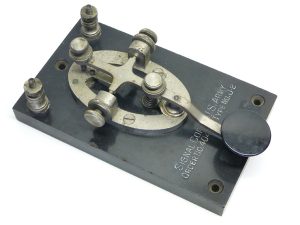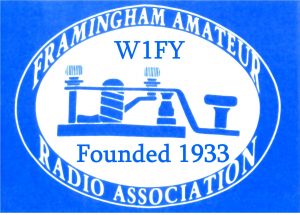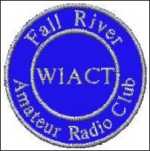The American Meteorological Society’s 100th Annual Meeting will be held in the Boston Convention and Exhibition Center in Boston’s Seaport District from January 12-16, 2020. It will feature many informative talks and presentations. Among those is an invited presentation by the Ham Radio Science Citizen Investigation (HamSCI) entitled, “Space Weather Operational Resources and Needs of the Amateur Radio Community” on Tuesday, January 14 from 11:45 AM- 12:00 PM.
The authors include:
Nathaniel A. Frissell
Univ. of Scranton
Scranton, PA, USA
Philip J. Erickson, W1PJE
MIT Haystack Observatory
Westford, MA, USA
Ethan S. Miller
Johns Hopkins Univ. Applied Physics Lab
Laurel, PA, USA
William Liles
HamSCI Community
Scranton, PA, USA
H. Ward Silver, N0AX
HamSCI Community
Scranton, PA, USA
R. Carl Luetzelschwab
HamSCI Community
Scranton, PA, USA
Tamitha Skov
Aerospace Corporation
El Segundo, CA, USA
The presentation abstract follows:
“The amateur (ham) radio community is a global community of over 3 million people who use and build radio equipment for communications, experimentation, and science. By definition, amateur radio is a volunteer service, with the operators required to hold government-issued licenses that are typically earned by passing knowledge tests covering radio regulations and practices, radio theory, and electromagnetic theory. In the United States, there are about 750,000 licensed hams, ranging in age from very young to very old, and ranging in experience from neophyte to people with advanced degrees in radio engineering and science. Amateur radio operators are licensed to transmit on bands spread across the radio frequency (RF) spectrum, from very low frequency (VLF) up to hundreds of gigahertz. The purpose of these communications range from mission-critical emergency and public service communications to social contacts to highly competitive contests and achievement award programs. Many of these communications rely on trans-ionospheric paths, and therefore are heavily influenced by conditions in near-Earth space, or space weather.
“Amateurs today obtain space weather and propagation prediction information from sources such as the NOAA Space Weather Prediction Center (SWPC), spaceweather.com, the Voice of America Coverage Analysis Program (VOACAP), amateur radio propagation columnists (ARRL, RSGB, and CQ Magazine), and spaceweatherwoman.com (Dr. Tamitha Skov). In order to predict success for their communications efforts, hams often use parameters such as smoothed sunspot number, 10.7 cm wavelength solar flux proxy, and the planetary Kp and Ap indices as inputs to predict radio propagation performance. Traditionally, these predictions focus on the driving influence of space conditions and the sun’s output. However, frontier research in the space sciences community has revealed that for improved predictive success, much more information needs to be provided on neutral atmosphere dynamics from the lower atmosphere and its coupled effects on the ionosphere, and predictions need to be available at higher temporal and spatial resolution. Lower atmospheric influences include atmospheric gravity waves that can couple to traveling ionospheric disturbances that can dramatically alter radio propagation paths. Tropospheric phenomena such as temperature inversions and wind shear also affect VHF and UHF propagation. To be most useful, the ham community needs operational products that provide real time nowcasts and multi-day forecasts which predict how space weather through the whole atmosphere affects radio wave propagation on global scale and at all operational wavelengths.
“To help with this effort, hams can provide data with unique spatial and temporal coverage back to the research and forecast community. The amateur radio community has already started this process with the creation of multiple global-scale, real-time propagation reporting systems such as the Weak Signal Propagation Reporting Network (WSPRNet), PSKReporter, and the Reverse Beacon Network (RBN). Studies by the Ham radio Science Citizen Investigation (HamSCI) have shown that data from these systems, if applied correctly, can effectively be used to study ionospheric space weather events. Experienced amateurs keep detailed records of verified point-to-point contacts and have extensive experience operating under a wide variety of geophysical conditions and locations, both of which can provide unique insights when shared with the professional research community. In this presentation, we will describe efforts led by the HamSCI collective to provide this research community feedback through active HamSCI community email lists and annual HamSCI workshops. We will also describe strategies with good initial success at amateur-professional collaboration, including a HamSCI-led amateur radio community – professional research community partnership to create a network of HamSCI Personal Space Weather Stations (PSWS), which will allow citizen scientists to make science-grade space weather observations from their own backyards.”
 Several area radio clubs have explored plans, or indicated they will participate in the upcoming annual Winter Field Day exercise, January 25-26, 2020.
Several area radio clubs have explored plans, or indicated they will participate in the upcoming annual Winter Field Day exercise, January 25-26, 2020. 


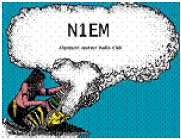
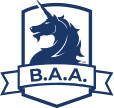 Boston Marathon Communications Committee writes:
Boston Marathon Communications Committee writes:
 From the ARRL Web, 01/02/20:
From the ARRL Web, 01/02/20: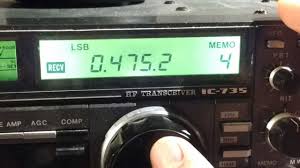 Les Peters, N1SV, writes on the YCCC list:
Les Peters, N1SV, writes on the YCCC list: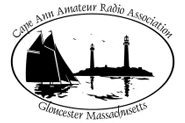 The
The 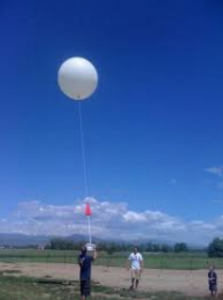
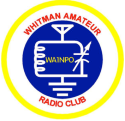

 The December, 2019, Section Newsletter is now available at
The December, 2019, Section Newsletter is now available at 